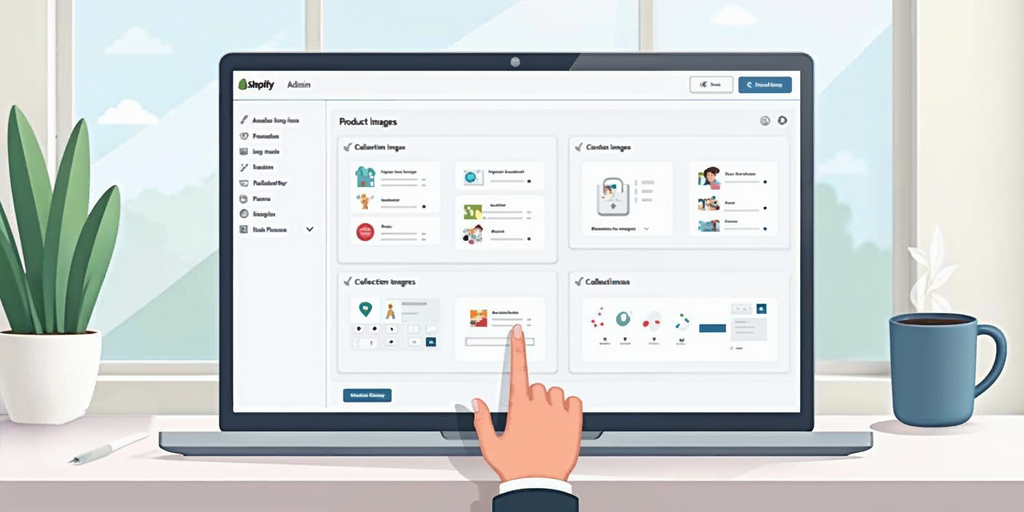How to Find Low Competition Products on Amazon

Entering the Amazon marketplace can feel like wandering through a maze without a map. With millions of products and intense competition, how do new Amazon sellers find their footing? The secret lies in uncovering low competition products that still have high demand. Let's explore practical strategies to help you how to find low competition products on amazon and set you on the road to success.
Understanding the Amazon Marketplace
Amazon isn't just an online store; it's a dynamic ecosystem where buyers and sellers interact every second. Understanding how this system works is key for finding profitable products to sell.
High-demand products naturally attract more sellers, ramping up the competition. However, some niches boast high demand but surprisingly few sellers. These are the golden opportunities where you can make your mark.
Amazon's algorithm plays a big role in product visibility. Factors like sales velocity, customer reviews, and keyword relevance influence where your product appears in search results. Optimizing these elements can boost your product listing and help you stand out in the crowd.
The Importance of Niche Selection
Choosing the right niche is like picking the best spot in a bustling market—it can make all the difference. By focusing on a specific segment where customer needs aren't fully met, you can position yourself as the go-to seller.
Selecting a niche allows you to:
- Face less competition from established brands.
- Target a specific audience more effectively.
- Increase your chances of building a strong brand presence.
It's not about trying to please everyone but about becoming indispensable to a select group of customers.
Criteria for Identifying Low Competition Products
Before diving in, it's vital to know what to look for in a potential product.
High Demand Indicators
Consistent sales volumes and steady or increasing search volumes signal that a product is in demand. Tools that track search volume can help you identify these trends.
Low Competition Indicators
A lower number of sellers offering similar products and fewer customer reviews suggest less competition. This means there's room for you to enter the market and capture the attention of buyers.
Profit Margins
Crunch the numbers to make sure the product will be profitable after accounting for costs like manufacturing, shipping, Amazon fees, and advertising.
Product Size and Weight
Opting for smaller, lightweight items can reduce shipping costs and logistical headaches. It's simpler to manage inventory and fulfillment when your products don't require special handling.
Non-Seasonal Demand
Look for products that sell steadily throughout the year. This provides a consistent income stream and avoids the peaks and valleys of seasonal items.
4 Effective Strategies for How to Find Low Competition Products on Amazon
1. Explore Amazon's Lists
Amazon offers several lists that can be treasure troves for product ideas.
The Best Sellers list shows top-selling products across various categories. Explore subcategories to find niches where competition might be lower.
Check out the Movers & Shakers list, which highlights products that have seen significant sales rank improvements. These trending products might be gaining traction but aren't yet saturated.
The New Releases section is perfect for spotting emerging products that could become the next big thing.
2. Use Amazon's Search Suggestions
Amazon's autocomplete feature can be a goldmine. Start typing a keyword, and you'll see popular searches related to it. These long-tail keywords can reveal niche products with less competition.
For example, typing "travel mug" might bring up "travel mug with infuser" or "travel mug spill-proof lid," indicating specific customer desires.
3. Analyze Customer Reviews
Customers often share exactly what they want—or don't want—in product reviews. By reading reviews on similar products, you can identify common complaints or suggestions.
This feedback is invaluable. It allows you to create a product that addresses these pain points, giving you a competitive edge.
4. Tap into Social Media and Trends
Social media isn't just for sharing photos of your lunch; it's a window into consumer interests and emerging trends.
Platforms like Instagram and Pinterest are visual hotspots where product trends often take off. TikTok can make products go viral overnight. Reddit hosts niche communities discussing specific needs and wants.
Engage with these platforms by following relevant hashtags and joining discussions. You'll gain insights into what potential customers are talking about and what products they're craving.
Check Out Our Marketplace Management Service.
Use Product Research Tools
Making decisions based on data beats guesswork every time. Several tools can help you analyze the market and identify profitable opportunities.
Helium 10
Helium 10 offers keyword research, market trends analysis, and competitor insights. It can help you find high search volume keywords with low competition and analyze niche scores to gauge potential profitability.
Jungle Scout
Jungle Scout provides sales estimates, revenue projections, and product tracking. It's excellent for identifying profitable products and understanding market demand and competition levels.
AMZScout
AMZScout delivers detailed sales data, competitor analysis, and historical trends. It helps you spot high demand products and assess profit margins accurately.
Keepa
Keepa offers price history charts and sales rank tracking. Understanding pricing trends can help you time your entry into the market effectively.
Keyword Research and SEO Optimization
Keywords are the bridge between your product and potential buyers. Using the right keywords in your product listing improves visibility and attracts more customers.
Focus on long-tail keywords—specific phrases that customers use when they're ready to buy. Tools like Google Keyword Planner, Ahrefs, or SEMrush can provide insights into search volumes and keyword difficulty.
Include primary keywords in your product title and description. Use bullet points to highlight key features, making it easy for customers to see the benefits at a glance.
Analyzing Competitors
Keep a close eye on your competitors. Assess their product listings, focusing on the quality of product images and the clarity of their descriptions.
Identify their weaknesses. Do they have poor customer service? Do reviews highlight consistent issues? Use this information to position your product as the better choice.
Validating Product Ideas
Before you invest heavily, it's wise to test the waters.
Order samples to evaluate the product quality firsthand. Share these samples with a small group—friends, family, or potential customers—and gather their feedback.
Calculate all costs meticulously, including manufacturing, shipping, Amazon fees, and marketing expenses. This ensures you'll have a healthy profit margin.
Crafting a Standout Selling Proposition
What sets your product apart from the rest? Your unique selling proposition is what makes customers choose you over competitors.
Highlight any special features, such as eco-friendly materials or an innovative design. Address customer pain points that others haven't solved.
Communicate this value clearly in your product listing. Let customers know exactly why your product is the best choice.
Sourcing and Supply Chain Considerations
Your product's success depends on a reliable supply chain.
Find trustworthy suppliers through platforms like Alibaba or by attending trade shows. Look for suppliers with positive reviews and a history of reliability.
Negotiate terms such as minimum order quantities and payment conditions. Building a good relationship with your supplier can lead to better deals and smoother transactions down the line.
Launch Strategy and Marketing
A great product deserves a great launch.
Optimize your product listing with high-quality images showing the product from multiple angles. Write clear, compelling descriptions that highlight the benefits.
Use Amazon Advertising options like Sponsored Products ads to increase visibility. Target the keywords you've identified during your research.
Consider promotional strategies like offering limited-time discounts or coupons. Encourage early buyers to leave honest reviews, which can boost your product's credibility.
Monitoring and Adjusting Your Strategy
In the ever-changing field of e-commerce, staying flexible is important.
Keep track of performance metrics like sales numbers, customer feedback, and keyword rankings. Adjust your pricing based on competition and update your product listing with new keywords or images as needed.
Continuous improvement is key. Implement changes based on customer reviews and keep an eye on market trends to stay ahead of the curve.
Ready to Start Your Journey?
Finding low competition products on Amazon might seem challenging, but with the right approach, it's absolutely within reach. By understanding the market, using the right tools, and staying attuned to customer needs, you can discover profitable products to sell and build a thriving business.
Every successful seller started somewhere. Take that first step today, and you might just find your next big seller on Amazon.
Share via



